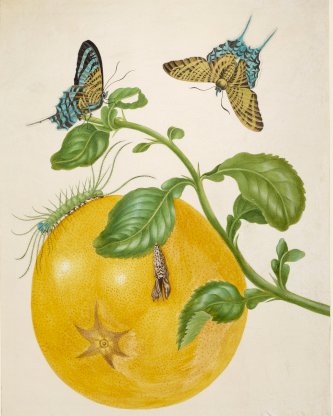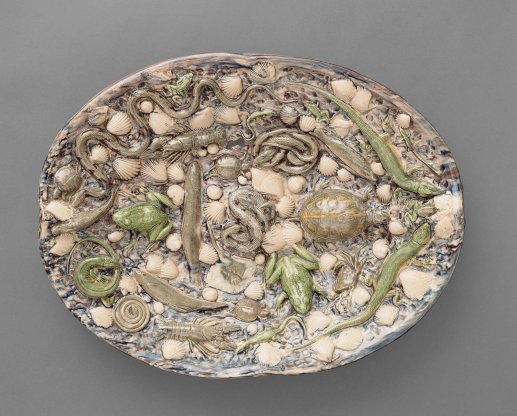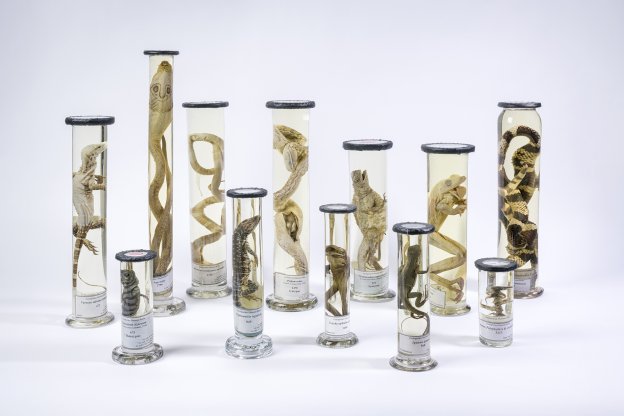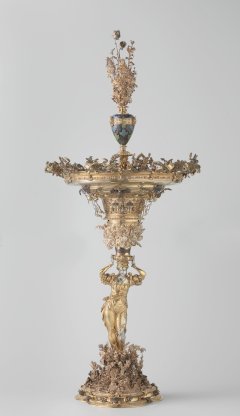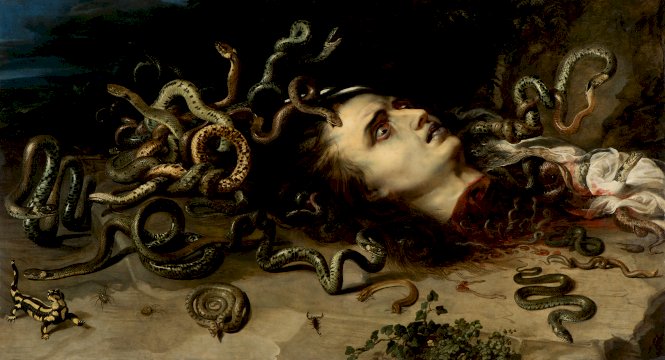The Rijksmuseum presents exhibition about crawly creatures
This autumn the Rijksmuseum will be teeming with more than a thousand colourful butterflies, hairy spiders and shiny toads. People once associated these crawly creatures with death and the devil, but later on their beauty gripped the imagination of artists and scientists such as Albrecht Dürer, Wenzel Jamnitzer, Antoni van Leeuwenhoek and Maria Sibylla Merian. Crawly Creatures, the exhibition, sheds light on the changing perceptions of these tiny beasties in the arts and sciences.
Museums and private collectors all over the world have loaned the highlights of their collections for this exhibition, including the recently rediscovered specimens – pres– preserved in formaldehyde – from the world-famous collection of the 17th-century apothecary and zoologist Albertus Seba from Germany, and Medusa painted by Peter Paul Rubens in 1617-18 from the Czech Republic. Crawly Creatures runs from 30 September 2022 to 15 January 2023 in the Phillips Wing of the Rijksmuseum. The exhibition has been made possible by the Don Quixote Foundation through the Rijksmuseum Fund.
FROM HORROR TO ASTONISHMENT
In the Middle Ages, crawly creatures were associated with death and the devil – there was a widespread belief that they spontaneously generated from ‘dead’ materials such as manure, rotting plant waste and soil. In works of art of the period, snakes, toads and lizards serve as metaphors for evil and appear as minions of the devil. This perception gradually shifted in the 15th and 16th centuries with the increasing appreciation for the aesthetic qualities of these animals. They came to be seen as examples of the beauty of God’s creation. So while in medieval manuscripts they appeared only in the margins, with time they slowly crept towards the centre of the page. The first artwork to take an insect as its main subject is a drawing of a stag beetle made by Albrecht Dürer in 1505 (J. Paul Getty Museum, Los Angeles). It is one of the highlights of this exhibition.
ART AND KNOWLEDGE
In the course of the 16th century, crawly creatures became increasingly popular in the cabinets of curiosities and wunderkammers at European royal courts. Sometimes these objects took the form of three-dimensional moulds, or life casts. This exhibition includes the most sensational of these life casts, along with other highlights of the wunderkammer of the Habsburg emperor (on loan from Kunsthistorisches Museum, Vienna). Interest in these animals also grew among other artists and scientists, with all manner of crawly creatures being bred, exchanged, studied, documented and collected in naturalia cabinets. The invention of the microscope gave renewed impetus to the study of these creatures – scientists were astonished by the new world that was now visible to them for the first time. This led to the unravelling of great mysteries, such as those surrounding reproduction and metamorphosis. In this period the worlds of art and science were less strictly separated than they are today. The naturalist Maria Sibylla Merian (1647-1717) travelled to Suriname to study and document in drawings the metamorphosis of insects. Several of her most highly valued drawings from the collection of Queen Elizabeth II will be hanging in the Rijksmuseum this autumn. Around 1650, increasing appreciation of crawly creatures gave rise to a new genre of painting known as sottobosco, or forest-floor still life, that took reptiles and insects as its subject. The inventor of the sottobosco, Otto Marseus van Schrieck, even bred his own reptiles, amphibians and insects. The sottobosco unites art and science in the last gallery of the exhibition.
VERMIN?
The appreciation of ‘lower life forms’ has taken a new turn in recent decades with the growing realisation that these tiny animals have crucial roles to play in the Earth’s ecology, and are essential to all forms of life. And now the realms of both science and art are subjecting the relationship between humans and other animals to critical re-examination. We will be exploring these subjects in lectures, workshops and events organised by the Rijksmuseum in collaboration with partners such as the World Wide Fund for Nature (WWF-NL), the Butterfly Foundation (De Vlinderstichting), and IUCN National Committee of The Netherlands (IUCN NL) and EMS Films, who will release the documentary Below ground level on 5 January 2023.
EXHIBITION DESIGN
The exhibition design for Crawly Creatures and Clara the Rhinoceros is by Theun Mosk | Ruimtetijd. Graphic design for the exhibition is by Irma Boom.
TICKETS
Tickets will be available from late August 2022 from the Rijksmuseum website. Visitors are required to book a start time for their visit.
BOOK
The book Crawly Creatures, compiled by Jan de Hond, Eric Jorink, Hans Mulder and others, is being released to accompany the exhibition.
INDISPENSABLE SUPPORT
The Rijksmuseum is grateful for all the forms of support it receives. Government funding, contributions from the business community and funds, as well as gifts, legacies and the support of Friends are essential for the Rijksmuseum.
